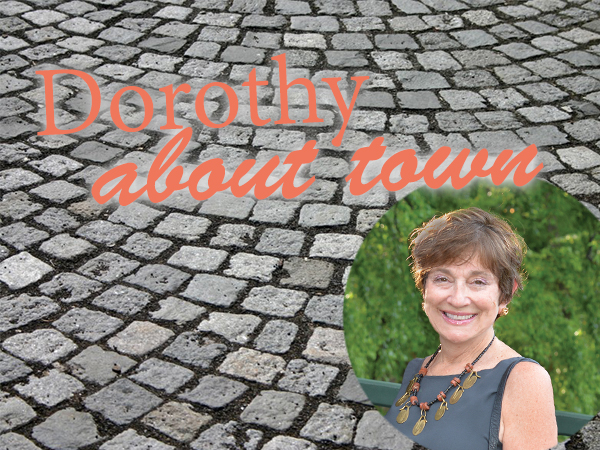Our Holocaust Museum & Learning Center has received a National Endowment for the Humanities grant, one of only seven in Missouri. The remarkable archive chronicles St. Louis’ connection to the devastating events of World War II, with artifacts and testimonials from hometown soldiers and Jewish survivors who came here. During a tour led by Lory Cooper, manager of programs & logistics, I realized that learning about the Holocaust is as much about the future as the past. Actually, more so.
Boomers, and even their children, have heard about it all their lives. But what about the generations coming up? To them it’s ancient history, so removed from their lives that it can be shrugged off. But not so easily for those who visit the center, especially if they get a personal tour from Cooper. Her grandparents, Simon and Bobbie Kohn, were survivors who built a business and family here. She adds an element of reality and immediacy to all those black and white photos. One photo is of her grandmother’s brother at his bar mitzvah, an event he outlived by only years; another is of the late Dr. Gustav Schonfeld in a Czech Hebrew class, sitting among 34 boys and their rabbi. Schonfeld alone survived.
Cooper tells visitors that Schonfeld helped develop the cholesterol drug Lipitor—and how many lives has that saved over the years, she asks? She also points to a photo of her grandparents with their children, grandchildren and great-grandchildren. Seeing that photo makes visitors connect the dots. Surely they realize that hate and bigotry robbed many pictured on these walls of their legacies, of their never-to-be-born families.
Cooper points out that bigotry of any kind is the first step on a slippery slope. As is silence in the face of bigotry. She tells of one educator from a nearby community who brought a group after discovering that two students had embraced racist views. The tour made a difference.
We can be proud that our community supports this institution. Nothing illuminates the trajectory of racism like seeing the museum’s display of prisoner patches in colors that mark Jews, homosexuals, antisocial personalities, German and Jewish political prisoners, criminals, race violators, gypsies, Jehovah’s Witnesses and immigrants.
If all that doesn’t serve as a cautionary tale, this prominently displayed quote by a German pastor does: “First they came for the Communists, but I did not speak out because I was not a Communist. Then they came for the trade unionists, but I did not speak out because I was not a trade unionist. Then they came for the Jews, but I did not speak out because I was not a Jew. Then they came for me, but there was no one left to speak for me.”
